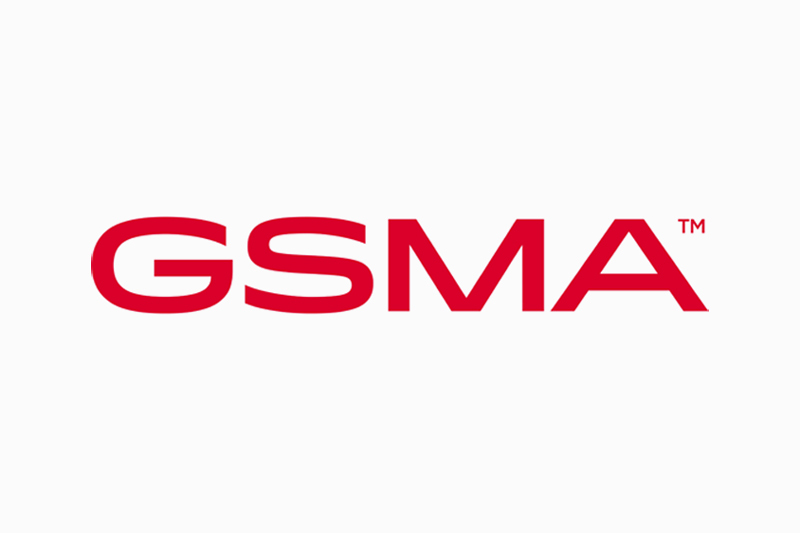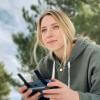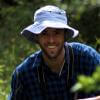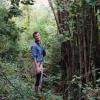Ten years ago, we couldn't have imagined how tools like machine learning, eDNA, and satellites would advance and transform conservation work. Now technology is advancing faster than ever, and as tools become smaller, lighter, and more affordable, it's vital to have a space where community members can discuss the next big thing, share ideas, compare tool options, and tell the story of their experiences - positive, negative, and anything in between - while using new technologies.
In 2021, the WILDLABS State of Conservation Tech report detailed what tools show the most promise according to community members, as well as what tools are currently seen as the most effective. And as new tools enter the field, we're excited to see how this data will change over time, and how this group grows over time as well.
Our State of Conservation Tech research also discusses something called the "Hype Cycle" - the pattern that occurs when a new technology bursts onto the scene, promises to be an exciting solution, encounters challenges as new users adopt the tool and put it into practice beyond just theory, and eventually settles into its most effective state as users acquire the right skills to use it to its actual potential. Machine learning, one of the most promising technologies, is currently in the middle of its own hype cycle, and we see community members working through their own hurdles to incorporate ML into their work effectively. Despite what you may think, this Hype Cycle can also be positive for tech development, as it means that users have big ideas for new tools, and with the right resources and skills, they can work toward bringing those ideas to life. And as our community members experiences the Hype Cycle for various tools at their own paces, we hope this group will also serve as a place to discuss that process and overcome hurdles together.
Ready to discover new possibilities? Join our Emerging Tech group now and get to know your forward-thinking conservation tech peers!
Header photo: Internet of Elephants
- @LouisaRC
- | she/her
LRC Wildlife Conservation
With 20 years' experience as a Conservation Practitioner, I've transitioned from carnivore scientist to Dean, nurturing African conservation leaders. My focus now is on leveraging innovative Web 3.0 technologies for maximum conservation impact.
- 0 Resources
- 1 Discussions
- 4 Groups
- 0 Resources
- 0 Discussions
- 11 Groups
- @MattyD797
- | He/Him
I am studying biotic problems with abiotic intelligence. My research focus is in computational ecology within fishery acoustics, machine learning, remote sensing, and combining visual and audio species identification systems.
- 0 Resources
- 0 Discussions
- 12 Groups
Neuroscientist & engineer transitioning to conservation tech. I have experience working with large imaging datasets, pose estimation and positional tracking, and machine learning. Looking to get involved with GIS, remote sensing, and AI for conservation.
- 0 Resources
- 0 Discussions
- 17 Groups
WILDLABS
This account is managed by the WILDLABS Team. Tag us or DM whenever you need help from our community team.



- 19 Resources
- 4 Discussions
- 11 Groups
- 0 Resources
- 0 Discussions
- 16 Groups
- @bioNathan
- | he/him
Innovation Design Engineer studying at MSc + MA level. Previously a Robotics engineer with specialisms in remote sensing, control systems & electronics design. Transitioning to ecological contexts. I use bioinspiration to inform tech design, both product & infrastructure.
- 0 Resources
- 0 Discussions
- 8 Groups
Tech 4 Conservation
President, Tech 4 Conservation
- 0 Resources
- 5 Discussions
- 18 Groups
- @donovantye
- | He/Him
Savanna Ecologist, Field Station Director and Head of Conservation Tech Projects for Organization for Tropical Studies (OTS).
- 0 Resources
- 0 Discussions
- 14 Groups
- @IsobelAshbey
- | She/her/hers
Running a Tech for Good initiative at Cambridge Consultants, looking for organisations who need help developing new technology for conservation


- 0 Resources
- 7 Discussions
- 5 Groups
Conservation technology enthusiast

- 0 Resources
- 3 Discussions
- 14 Groups
- 0 Resources
- 0 Discussions
- 11 Groups
April 2024
event
December 2023
event
November 2023
event
Climasens: Using technology to understand and respond to climate change
30 May 2023 12:36pm
Climasens’ platform is now being used by Australian Councils to support disaster resilience efforts. It’s inaugural product, HeatSens, is being used to bridge the gap between emergency management and climate change preparedness to better inform efforts and investment towards climate change adaptation, especially in areas where vulnerable populations exist.
AirSeed: Drone planting takes flight to promote reforestation in flood-affected NSW
30 May 2023 12:28pm
AirSeed has developed a unique approach to tackle climate change and restore biodiversity by combining drone technology, machine learning, and seed pod biotechnology to carry out planting that’s 25x faster than traditional hand-planting methods.
Creating digital solutions to help people and nature thrive: Lessons from the frontline
29 May 2023 7:02am
10 AI for the Planet Projects you should be excited about
25 May 2023 11:07am
FieldKit: Accessible Sensor Technology for All
 FieldKit
FieldKit
23 May 2023 10:26pm
Field Surveyor
16 May 2023 4:06pm
Lecturer/Associate Professor of Ecology and Innovative Technologies
 UCL
UCL
16 May 2023 9:25am
Deadline Approaching: Conservation Tech Award
15 May 2023 10:21pm
NERC Digital Gathering 2023
15 May 2023 1:42pm
Women in Tech Festival 2023
12 May 2023 1:43pm
Introducing the 2023 Conservation Tech Showcase
11 May 2023 5:06pm
2023 F5 Tech for Good Grant Application Now Open
10 May 2023 12:28pm
ICCB 2023 WILDLABS Workshop: Bridging Sectors for Movement Ecology Innovation
9 May 2023 8:37pm
Development of average speed devices
GRO is the story of what on Earth is going on
5 May 2023 1:50pm
Machine Learning Researcher - Computer Vision (Remote)
2 May 2023 8:49pm
Silverstrand Capital's Biodiversity Accelerator+ Programme - Deadline Extended to 5th May 2023
2 May 2023 3:24pm
[Recordings Now Available!) EarthRanger User Conference
27 April 2023 5:52am
Looking to contribute
27 April 2023 2:41am
The GSMA Innovation Fund for Climate Resilience and Adaptation 2.0
 GSMA
GSMA
21 April 2023 11:32am
Rapid due diligence for forest carbon projects
21 April 2023 10:51am
Catch up with The Variety Hour: April 2023
21 April 2023 10:42am
The 59th Annual Meeting of Illinois Chapter of The Wildlife Society
12 April 2023 5:24am
Advice on afforable LiDAR scanners for Amazon forest surveys
5 April 2023 3:47pm
6 April 2023 6:21pm
Hi Jeremy,
With a quick search I've found the paper linked below. It looks like equipments such as Livox MID are sufficient for plot-level analyses, but not for individual trees. Also, it has performed worse in dense canopies and broadleaf forest, thus I believe we won't have a technology capable of doing what you aim for this amount of money (< $1000) in a few years from now.
I hope someone give us an alternative, though. :D
Best,
Office & Warehouse Exec
5 April 2023 6:22pm
The WILDLABS Variety Hour: March 2023 - YouTube
30 March 2023 4:04pm
If you missed our Variety Hour show yesterday, do not fear! It's already live on youtube for your viewing pleasure. Enjoy!
Global shortage of Raspberry Pis - What are the alternatives
3 November 2022 10:27am
28 March 2023 9:37pm
Have you considered Arduinos?
29 March 2023 10:13am
UPDATE: The Banana Pi didnt work out for us as it was not possible to track back all the components and ensure that they were responsibly sourced. The Rock board did work for us and we were able to port our system onto this. We will be rolling out units using this over the summer. It also looks like Raspberry Pis are coming back on line and we were able to secure a bulk order for deliver mid-summer
29 March 2023 10:14am
Yes, but for our needs that are not powerful enough
NFTs for Carbon Credits
16 March 2023 3:24am
24 March 2023 12:41pm
Hi James - I'm working for Regen Network at the intersection of blockchain and ecosystem regeneration and am developing an Environmental Stewardship initiative that might be of interest. I'm also familiar with a lot of related work people are doing around the world, including projects focused on NFTs. I think NIHT Inc. is using or at least thinking about using blockchain tech for forest protection in PNG. There is a lot of innovation going on in this space, but there are also a lot of sketchy projects so navigating the options isn't all that straightforward. One of these days, it would be good to have a Wildlabs session on blockchain and conservation. Let me know how I can help.
Catch up with The Variety Hour: March 2023
23 March 2023 11:09am



























31 May 2023 10:51pm